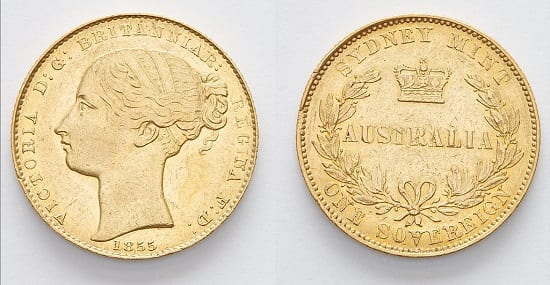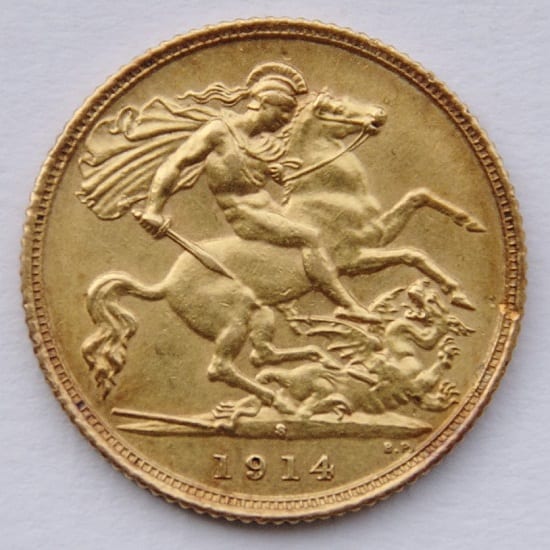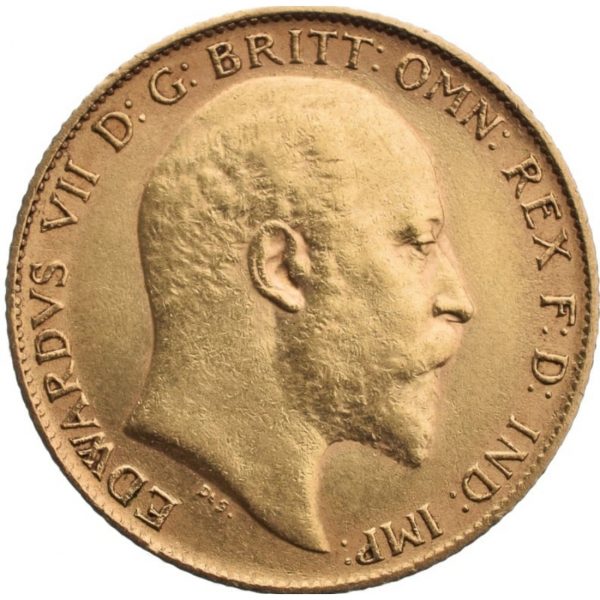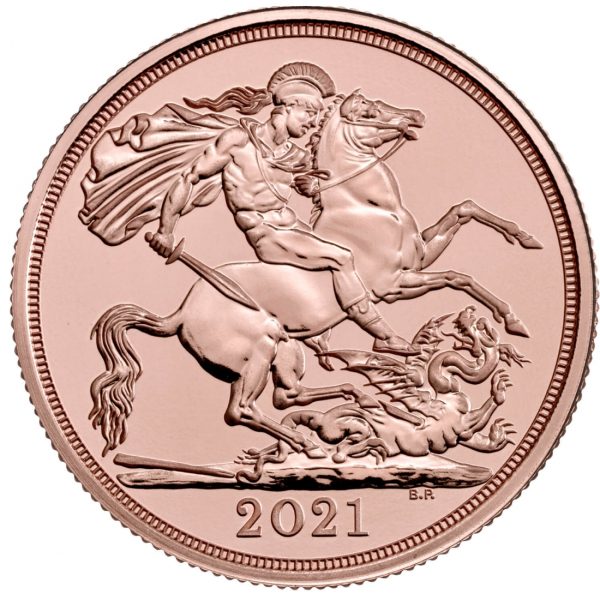What is the Difference between a Gold Sovereign and a Half Sovereign?
18/12/2022Daniel Fisher
Free & fully insured UK Delivery. Learn more
Secure & flexible payments. Learn more

Buyback Guarantee Learn more
The sovereign is an iconic British coin popular among investors and collectors. The modern sovereign has been in existence since 1817, and the coin has witnessed the reigns of several British monarchs.
The current version features a design of St George and the Dragon, created by the famous coin designer Benedetto Pistrucci.
The sovereign is available with various rulers featured on its obverse, owing to separate releases during the reigns of different monarchs.
The gold coins issued during longer reigning monarchs will also have various portraits within that reign. For example, Sovereigns issued during Queen Victoria’s reign can have three different portraits – the young head, the Jubilee head and the old head.
An incredible five different portraits covered the record-breaking rule of Queen Elizabth II.
These variances make the coin extremely attractive to collectors. Excitement is now building for the first Sovereigns to feature King Charles III.
This article will explore the differences between a gold sovereign, otherwise known as a full sovereign and a half-sovereign.

A full Sovereign from the Sydney Mint, depicting the young head of Queen Victoria (1855).
In basic terms, the sovereign is twice the size of the Half Sovereign. The smaller coin is a miniature replica of the larger version, made from a 22-carat alloy mix and sharing the same front and back design. To the untrained eye, the two coins deceptively appear to be very similar in size, with only a marginal difference in diameters. It’s the difference in thickness where the weight difference adds up. A full gold Sovereign coin is about the size of a one pence piece and weighs 7.98g, while the half Sovereign is closer to the old halfpenny size and weighs 3.99g. Both have a face value, qualifying them as legal tender in the UK, with the larger coin featuring a £1 value and the half Sovereign 50p.
The half sovereign goes by that name since it is half the weight of a full sovereign and has half the gold content. The face value of the half-sovereign is also half a pound sterling. The Bank of England decided to discontinue the gold standard in 1931.
Since then, the half-sovereign was minted as a bullion coin. However, it continued to be recognised as a legal tender in the UK.
This ultimate guide is a must-read before you invest
When we speak about modern sovereigns, including the half sovereigns, we refer to issues beyond 1817. The dimensions of the modern half-sovereign include a diameter of 19.30 mm and a thickness of 0.99mm.
On the other hand, the full sovereign has a diameter of 22.05 mm and a thickness of 1.52 mm. The half-sovereign, weighing 3.99 g, is around half that of the full sovereign, which weighs 7.98 g. The half-sovereign, therefore, contains 0.1176 troy ounces of 22-carat crown gold. You can see more detail about the sizes of sovereigns on our dedicated page.
The half-sovereign was introduced into British coinage in 1544, during the time of King Henry VIII. In contrast, the original sovereign was released during the reign of King Henry VII in 1489. However, the circulation of both coins lasted only till 1604.
The long hiatus of both sovereigns finally ended in 1817, when they were reintroduced, following the great British recoinage of 1816. In the following years, the half-sovereign remained in production until 1926 in the UK. It is interesting to note that Australia continued using this coin until 1933.
Production of the half-sovereign was restarted only in 1980. However, there were certain special issues for events like the coronation of Queen Elizabeth II.

When building a gold portfolio, divisibility is an essential factor.
The half-sovereign is an invaluable addition to a gold portfolio since it allows the investor to invest in a small portion of gold, around half that of the gold sovereign, which contains approximately a quarter ounce of gold.
This makes the half-sovereign a more affordable coin for those with modest budgets.
With growing fears of fiat currency devaluation, more investors are seeking the smallest denominated gold coins to prepare for possible future bartering.
The half-sovereign and the full gold sovereign coins are UK legal tender and qualify for CGT exemptions. Since both coins contain investment-grade gold, they can be purchased VAT-free.
While the sovereign may be double the weight of the smaller half Sovereign, it can be bought for less than double the price.
The general rule of thumb with prices for standard bullion coins is the smaller the coin, the higher the premium.
This is due to relative production costs reducing as coins get bigger. In other words, it’s cheaper to make one 1-ounce coin than 4 quarter-ounce coins.
Therefore, investors should understand that they will pay an extra premium for the convenience of owning smaller-denominated coins.
In theory, the potential values of historical and collectable Sovereigns and half Sovereigns are the same. It all depends on how rare a particular coin is.
When considering the purchase of British gold sovereigns, it’s essential to understand the differences in gold content between a full sovereign and a half sovereign.
These popular investment coins offer varying degrees of gold content, and knowing this information can help you make informed decisions when buying gold.
Full sovereigns and modern half sovereigns are made from 22-carat gold, meaning they consist of 91.67% fine gold, with the remaining 8.33% made up of a copper alloy to give the coin durability.
However, these coins’ actual amount of gold differs significantly due to their size and weight.
A full sovereign contains 7.322 grams (0.2354 troy ounces) of pure gold, whereas a half sovereign holds half of this amount – 3.661 grams (0.1177 troy ounces) of pure gold.
This difference in gold content makes full sovereigns more valuable than half sovereigns, as they have a higher weight of gold.
Summary of the differences between a sovereign and a half sovereign:
When buying half sovereigns, it’s vital that you understand that the price difference is due to lower gold content.
Although a full sovereign and a half-sovereign coin share the same purity and design, the amount of gold they contain varies.
Investors seeking a higher gold content should opt for full sovereigns, while those who want a more affordable option can consider half sovereigns
The smaller Half Sovereigns look more worn on average than the larger Full Sovereigns.
The difference is usually apparent when comparing older coins from the Edwardian or Victorian eras.
This is simply due to the Half Sovereign’s diminutive size offering less protection.
When considering an investment in British gold sovereigns, evaluating the pros and cons of both full and half sovereigns is essential.
Each coin type caters to different investment objectives and preferences, making it crucial to understand their features before purchasing.
Let’s compare a full sovereign and a half sovereign to help you determine which coin is right for you.


Whether you’re in the market to buy half-sovereign, a full one or maybe even gold Britannia coins, you can benefit from great impartial advice when you call the investment team at Physical Gold. Our team can offer you advice based on solid research on the right coins and gold bars to invest in. Call us today on (020) 7060 9992 or get in touch online via our website.
Image credits: Wikimedia Commons and Wikimedia Commons
Live Gold Spot Price in Sterling. Gold is one of the densest of all metals. It is a good conductor of heat and electricity. It is also soft and the most malleable and ductile of the elements; an ounce (31.1 grams; gold is weighed in troy ounces) can be beaten out to 187 square feet (about 17 square metres) in extremely thin sheets called gold leaf.
Live Silver Spot Price in Sterling. Silver (Ag), chemical element, a white lustrous metal valued for its decorative beauty and electrical conductivity. Silver is located in Group 11 (Ib) and Period 5 of the periodic table, between copper (Period 4) and gold (Period 6), and its physical and chemical properties are intermediate between those two metals.